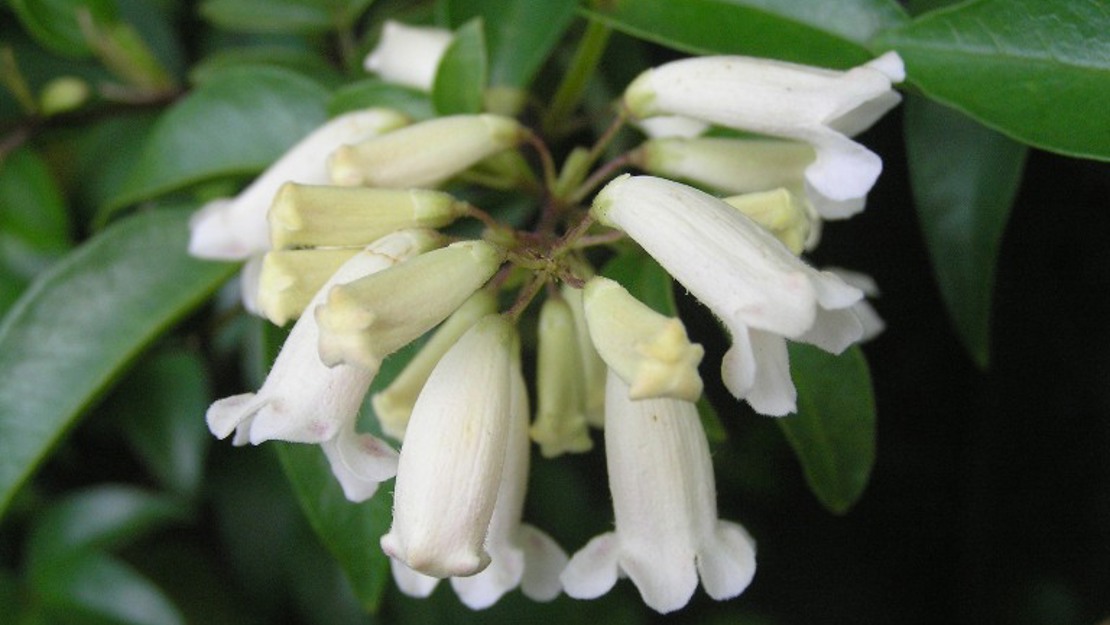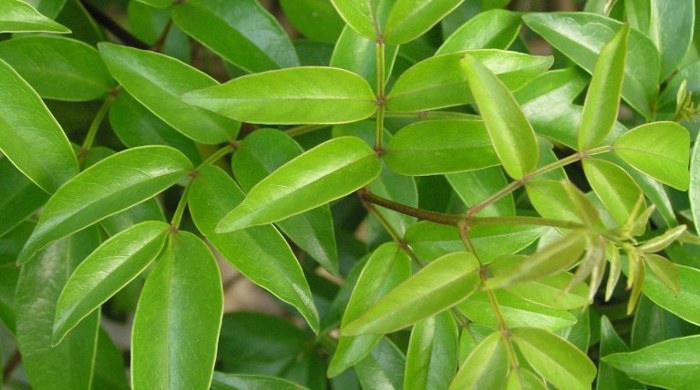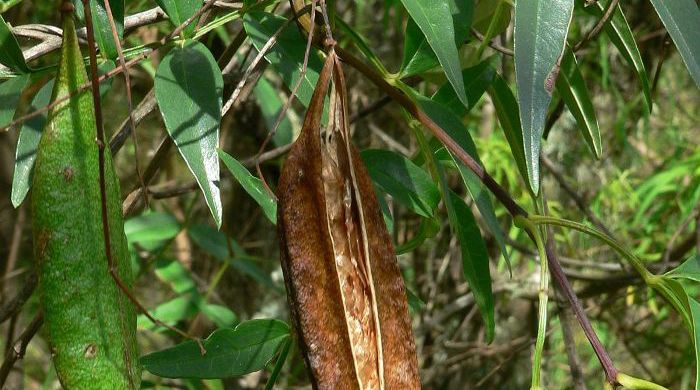Pandorea pandorana
Wonga wonga vine
Family: Bignoniaceae
Origin: Australia, New Guinea

Regional Pest Management Plan (RPMP) status
- Not a legally declared pest
General description
Perennial climbing vine. Stems become woody with age. Leaves are glossy, green, opposite and pinnate, with < 9 pointed oval leaflets.
Flowers are tubular, fragrant, cream/yellow/burgundy with reddish throats and borne in terminal clusters in August – November. Seed capsules are beaked, green turning brown and contain winged seeds.
What you need to know
Although wonga wonga vine is not a legally declared pest plant, it may still be invasive in some situations. Consider lower-risk alternatives for your garden, such as native plants.
Habitats
Disturbed forest, shrubland, coastal cliffs, rocky sites, gardens.
Dispersal
Seeds dispersed by wind. Vegetative spread from layering. Human-mediated dispersal through dumping of garden waste, deliberate plantings and movement of contaminated soil.
Impact on environment
Can form dense infestations and prevent native seedling recruitment.
Control
Site Management
Follow up treated areas 3 times per year. Encourage natural regeneration of native plants or replant treated areas where possible after 2-3 treatments to establish dense ground cover and minimise reinvasion.
Recommended approaches
Physical control
Method: Cut vines and leave upper stems to die in trees or dig out.
Plant parts requiring disposal: All parts (except vines if left to die in trees).
Disposal options: Compost in a composting weed bag or remove to greenwaste or landfill.
Biocontrol
Biocontrol is currently not available for this species.
Community agrichemical control recommendations
No qualifications:
For small infestations: Cut stump and paste freshly cut base of stems with metsulfuron gel.
Basic Growsafe certified:
For small infestations: Cut stump and spray freshly cut base of stems with 1g metsulfuron-methyl per 1L of water. Cut vines at waist height and foliar spray vines on the ground with 0.5g metsulfuron-methyl per 1L of water.
Certified Handler/Experienced agrichemical user:
For medium to large infestations: Cut vines at waist height and foliar spray vines on the ground with 5g metsulfuron-methyl per 10L of water and 20ml penetrant.
Caution: When using any herbicide or pesticide please read the label thoroughly to ensure that all instructions and safety requirements are followed.






